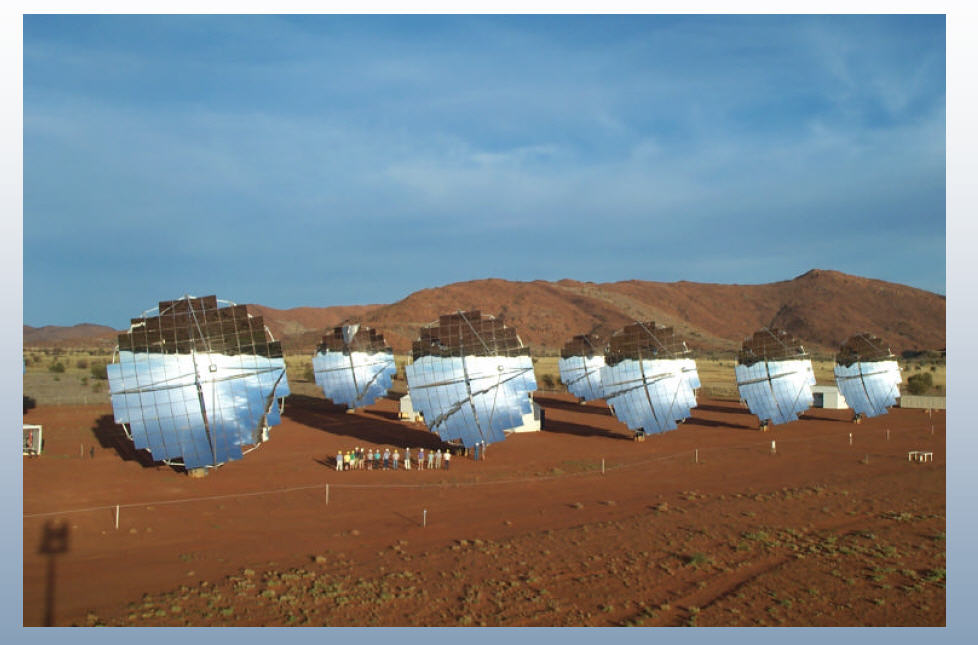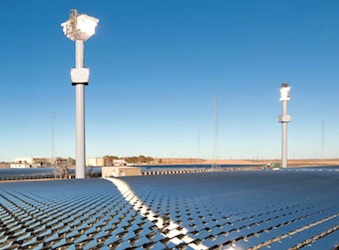   However, levelized costs for this technology remain high and future cost reductions may be overly optimistic. This is from a 2009 report: (its now 2015 by the way) From 2011: Because growth in Wind was flat in 2013, solar has caught up a little bit in terms of new sources of generation:  Currently there is ~60 GW of wind in the US but only ~1 GW of CSP; new projects are in the works, however:  Still, as of 2014, there were only 3.5 GW of world wide CSP installed as Solar Thermal Electricity (STE)  which is less than 0.1% of the worlds electrical nameplate.
which is less than 0.1% of the worlds electrical nameplate.
And This is an example of a stupid, style over substance project
On the other hand the Austrailans have sort of done it right
Long term outlook, however, is that CSP will always be significantly more expensive than PV. 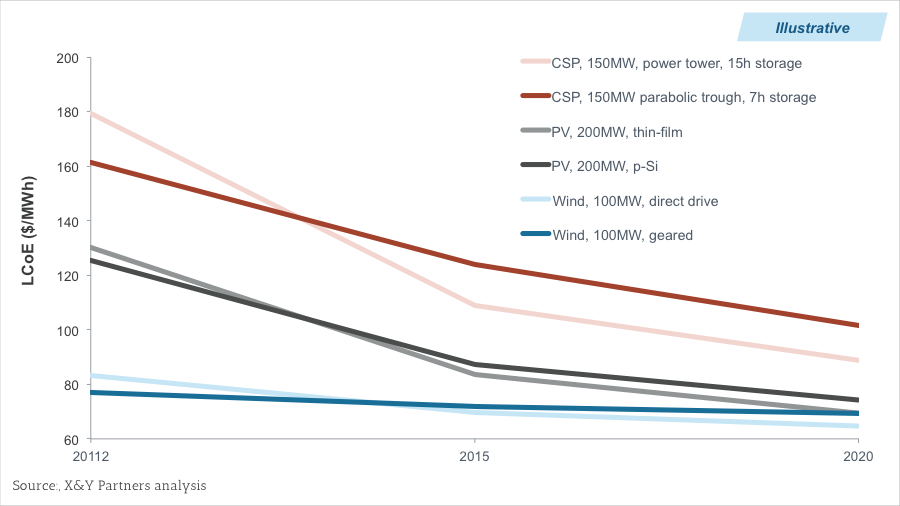 But still, the future roadmap is quite optimistic, we will see as the primary assumption here is that the cost of a CSP facility in 2030 will be 1/2 of what it is in 2015. For instance, the DOE projection is 6 cents per KWH for CSP in the US by 2020 and I serously doubt that will be achieved. Again, aspiriational goals vs the real world. In that real world, the issue then becomes the reliability of the CPV components over time. Also CPV systems function best under clear sky, direct-sun conditions. Early installations were made in Saudi Arabia, Arizona and at Alice Springs, Australia. Costs are a strong function of DNI (Direct Normal Irradiance): 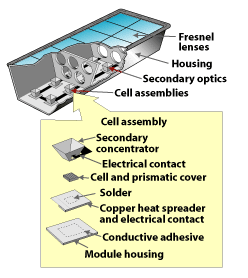 The primary potential problem here for any CSP system is heat load and subsquent failure
of either the PV material itself or one of the components in the optical path.
Within CPV systems, the concentration rato can have high variance.
If light that falls on 100 sq. cm of reflector surface is focussed onto a 1 sq. cm surface
of PV material, then the concentration ratio is 100. Current commercial design concentration
ratios are in the range 200-300 suns. Concentration ratios of more than 1000 have been produced by start up companies that
have claimed to "solve" the energy problem but those companies, like their components, quickly melted.
The primary potential problem here for any CSP system is heat load and subsquent failure
of either the PV material itself or one of the components in the optical path.
Within CPV systems, the concentration rato can have high variance.
If light that falls on 100 sq. cm of reflector surface is focussed onto a 1 sq. cm surface
of PV material, then the concentration ratio is 100. Current commercial design concentration
ratios are in the range 200-300 suns. Concentration ratios of more than 1000 have been produced by start up companies that
have claimed to "solve" the energy problem but those companies, like their components, quickly melted.
Various Designs for CSP systems are shown below:
Linear Fresnel Lens:
Advantage = simplest system and light weight. Focus is "horizontal" and not parabolic. Can be made Large or small 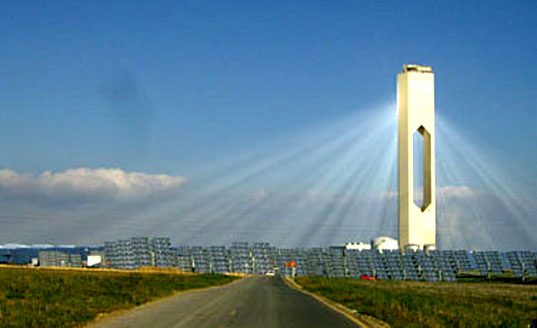 In this case a network of mirrors (heliostats) mostly surrounds a central tower. That reflected and focussed sunlight heats up some kind of receiver at the top of the tower. That hot liquid, usually molten salts, then mixes with water to make steam and hence electricity. This process is shown below. 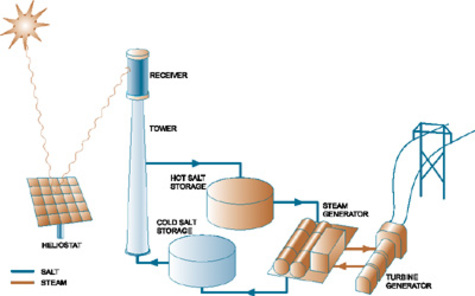
|
